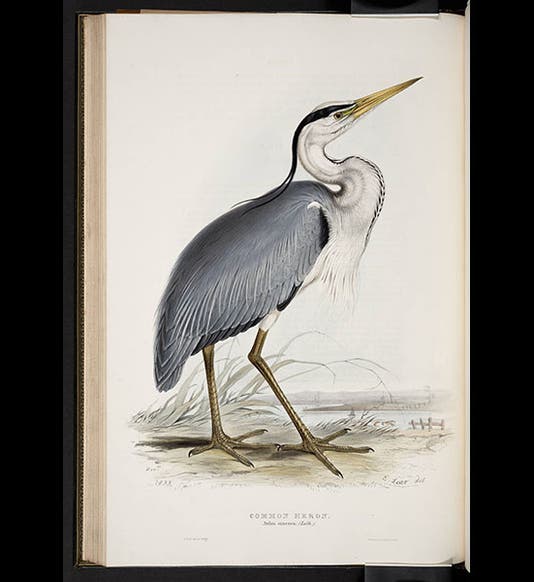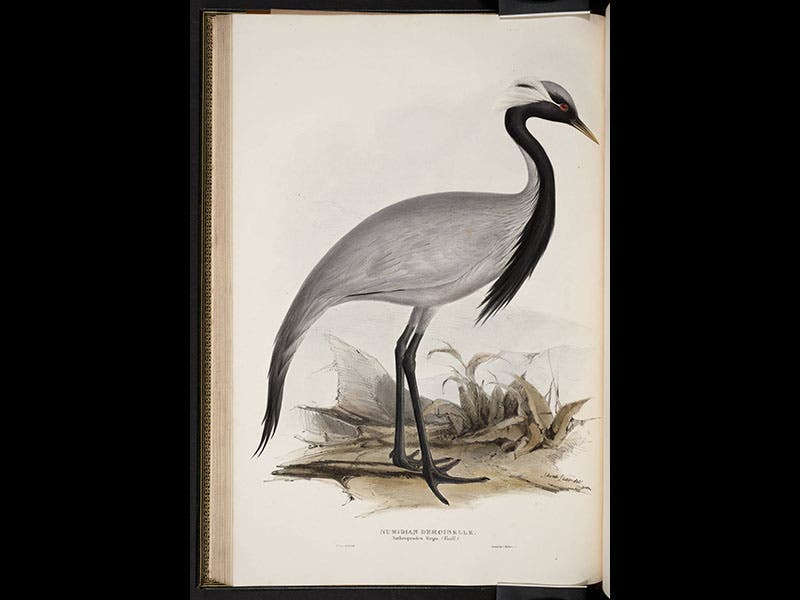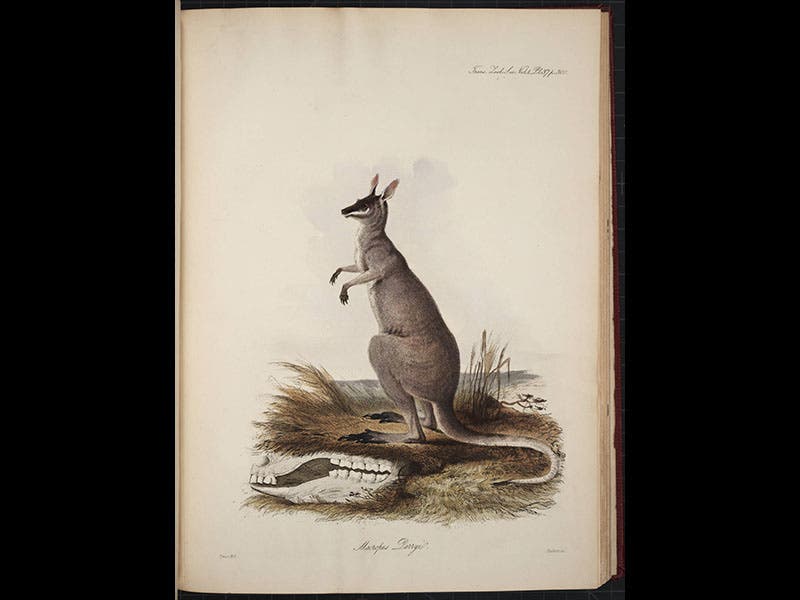Scientist of the Day - Edward Lear
Edward Lear, an English poet and naturalist, was born May 12, 1812. Most people know Lear for his limericks and nonsense verse, and you probably recognize the poem that begins: “The owl and the pussy-cat went to sea in a beautiful pea-green boat”, and continues, a stanza or so later, after the wedding with the ring from the piggy-wig’s nose: “they dined on mince, and slices of quince, which they ate with a runcible spoon.” Many people do not know that Lear was also one of the great Victorian illustrators of nature, and although he worked amid such giants as Elizabeth Gould and John James Audubon, one might argue that he rose above them all. When he was only 18, Lear commenced a series of paintings of parrots, which was completed and published in 1832 as Illustrations of the Family of Psittacidae, or Parrots. This is a gorgeous collection of 42 lithographs of parrots and macaws, and for a while we had a copy resting comfortably on permanent loan in our vault. Unfortunately, the loan proved to be not so permanent when the lending couple separated, and Lear’s Parrots has flown the coop. It was a great loss. The image above of the Red and Yellow Macaw is from the copy at the University of Wisconsin (second image).
Lear apparently made no money from his first publishing endeavor, so he eked out a living for the next few years supplying John Gould with paintings for his Birds of Europe (1832-37), and this magnificent set of volumes we do have. The Common Heron is perhaps Lear’s most glorious lithograph for Gould (first image), and we displayed it in our 2009 exhibition, The Grandeur of Life. However, his Numidian Demoiselle (third image) is almost as impressive.
Lear was probably at his best drawing large birds, especially aquatic birds, but when pressed into service, he could render a very convincing mammal, as we see with the Fossa from Madagascar (fourth image) and the Pretty-Faced Wallaby from Australia (fifth image), both published in the Transactions of the Zoological Society of London (1835).
Dr. William B. Ashworth, Jr., Consultant for the History of Science, Linda Hall Library and Associate Professor, Department of History, University of Missouri-Kansas City. Comments or corrections are welcome; please direct to ashworthw@umkc.edu.








![“Aurora Borealis,” hand-colored wood engraving by Josiah Wood Whymper, [Natural Phenomena], plate 2, 1846 (Linda Hall Library)](https://assets-us-01.kc-usercontent.com:443/9dd25524-761a-000d-d79f-86a5086d4774/0245ffcb-b70c-477c-8792-0a73ebd54eb2/Whymper%2011.jpg?w=210&h=210&auto=format&fit=crop)


